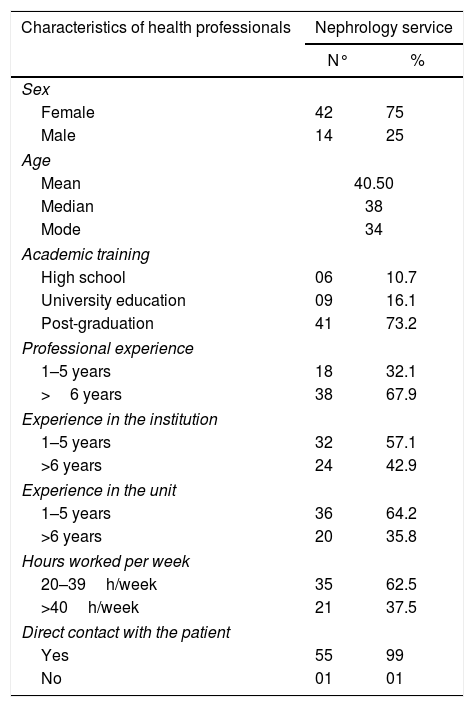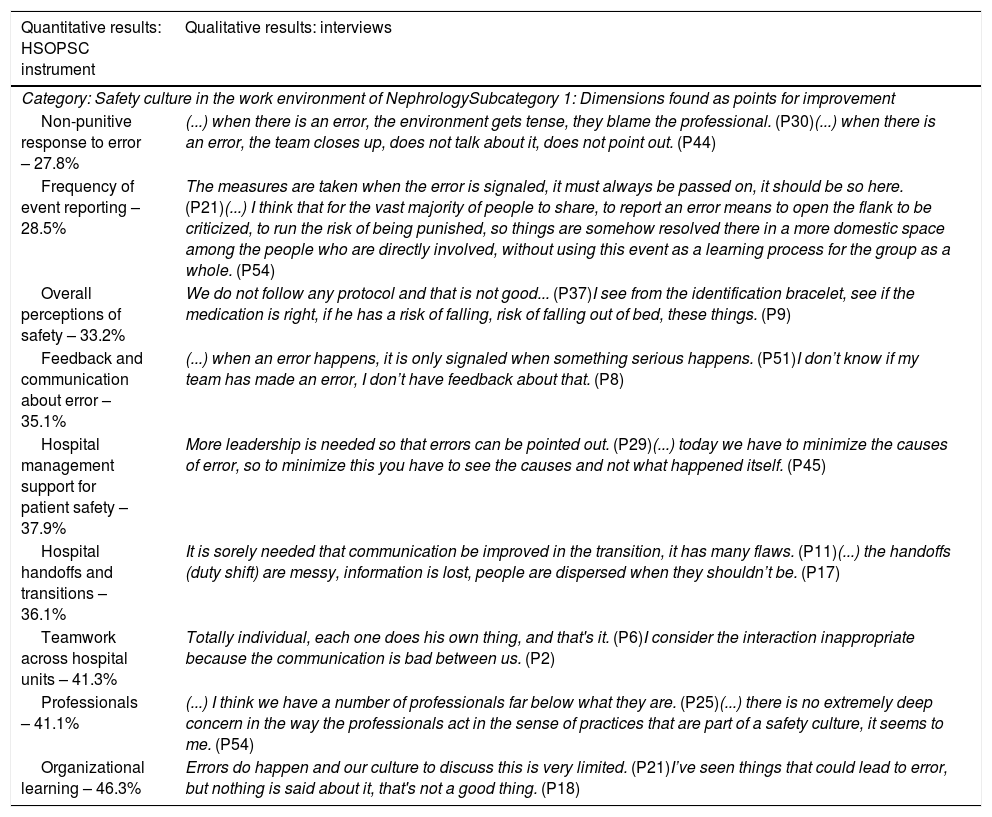To evaluate the safety culture from the perception of the multidisciplinary team of the nephrology service of a university hospital.
MethodMixed methods study with concomitant triangulation of data, with 56 participants. In the adopted approach, data are weighted with QUAN+qual notation. Quantitative data were collected using the Hospital Survey on Patient Safety Culture instrument and analyzed using simple descriptive statistics. Qualitative data were obtained from recorded interviews and analyzed using the content analysis technique proposed by Bardin.
ResultsThe answers obtained in the quantitative instrument pointed out that of the twelve dimensions of the service, three were neutral, nine were fragile, and none was strong. From the qualitative analysis, similarities and divergences were identified in the statements about the quantitative data. The intersection of the data resulted in the category “Safety culture in the work environment of Nephrology”.
ConclusionKnowing the level of safety culture through the perception of nephrology health professionals allowed the identification of a critical and problematic scenario that needs improvements in the dimensions classified as fragile in order to advance in the perspectives of safety and in the polishing of actions aimed at safer care.
Evaluar la cultura de seguridad desde la percepción del equipo multidisciplinar del servicio de nefrología de un hospital universitario.
MétodoEstudio de un método mixto con triangulación concomitante de datos sobre 56 participantes. En el enfoque adoptado, los datos se ponderan con la notación QUAN+qual. Los datos cuantitativos se recopilaron utilizando el instrumento Hospital Survey on Patient Safety Culture y se analizaron mediante estadísticas descriptivas simples. Los datos cualitativos se obtuvieron de entrevistas grabadas, y se analizaron utilizando la técnica de análisis de contenido de Bardin.
ResultadosLas respuestas obtenidas por el instrumento cuantitativo señalaron que, de las 12 dimensiones del servicio, 3 fueron consideradas neutrales, 9 frágiles y ninguna dimensión obtuvo una clasificación fuerte. A partir del análisis cualitativo, se identificaron similitudes y divergencias en las declaraciones de los participantes sobre los datos cuantitativos. Como intersección de los datos, se presentó la categoría «La cultura de la seguridad en el ambiente laboral de nefrología».
ConclusiónConocer el nivel de cultura de seguridad a través de la percepción de los profesionales de la salud en nefrología nos permitió identificar un escenario crítico y problemático que exige estrategias de mejora en dimensiones catalogadas como frágiles para avanzar en las perspectivas de seguridad, y mejorar las acciones orientadas a una atención más segura.
Artículo
Comprando el artículo el PDF del mismo podrá ser descargado
Precio 19,34 €
Comprar ahora










